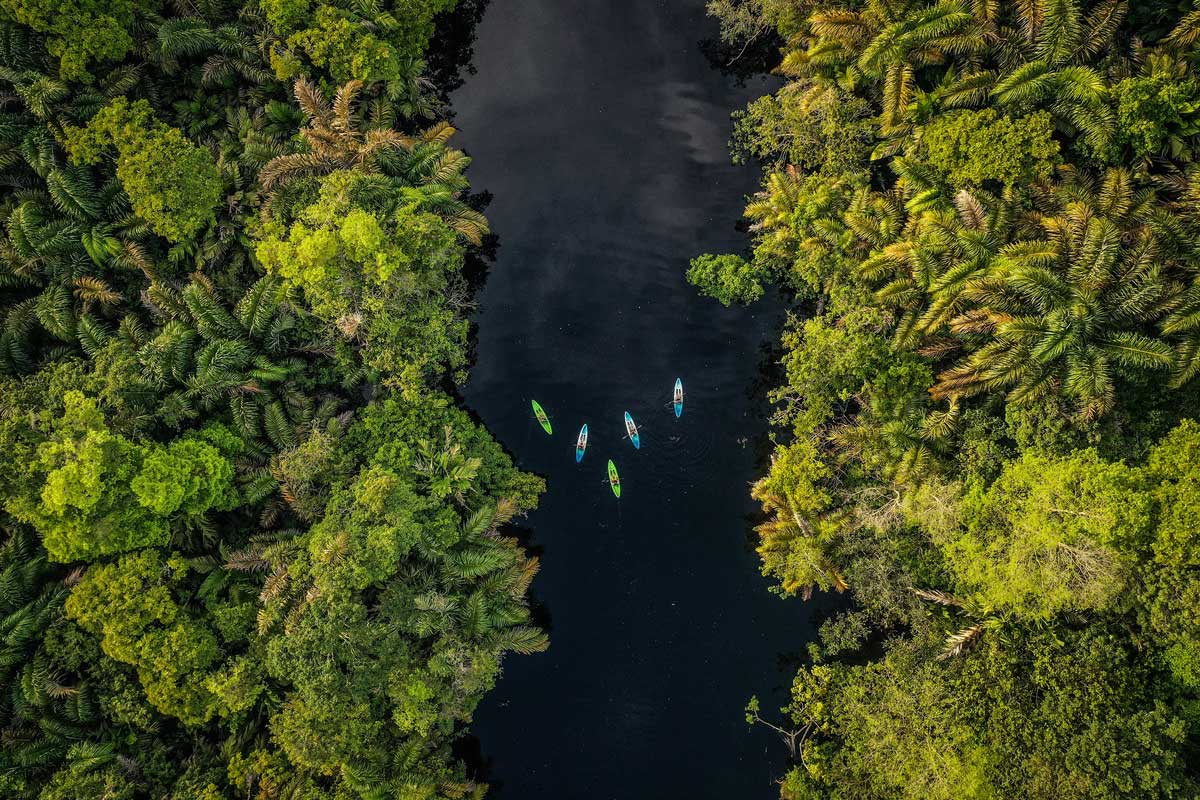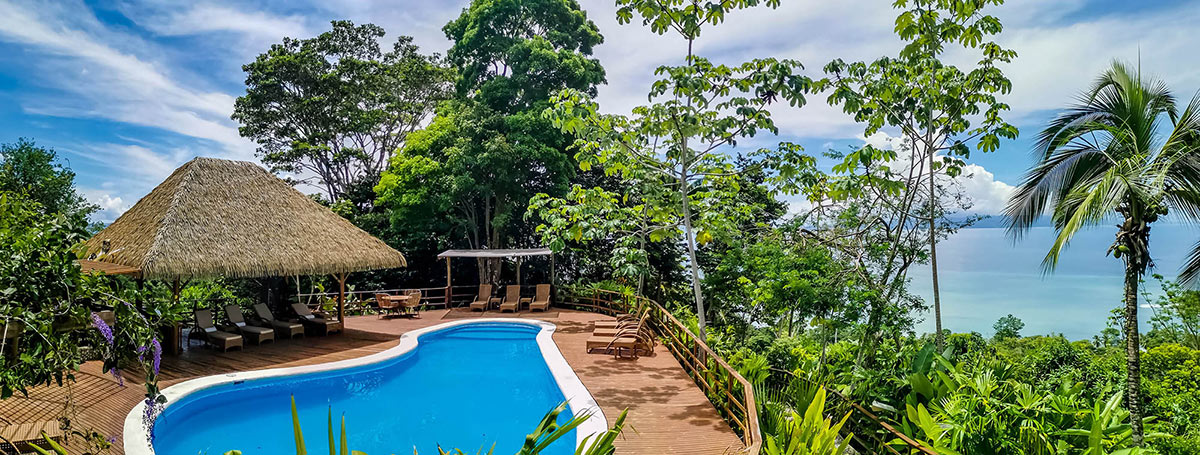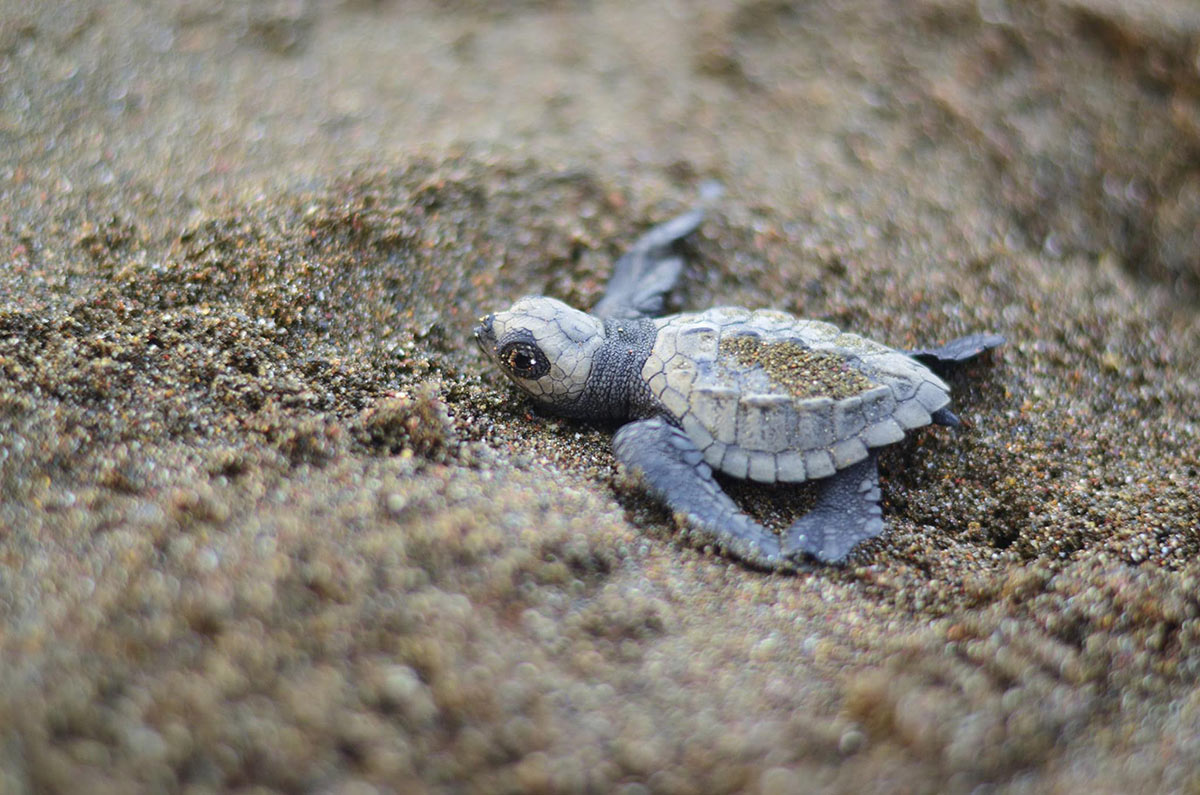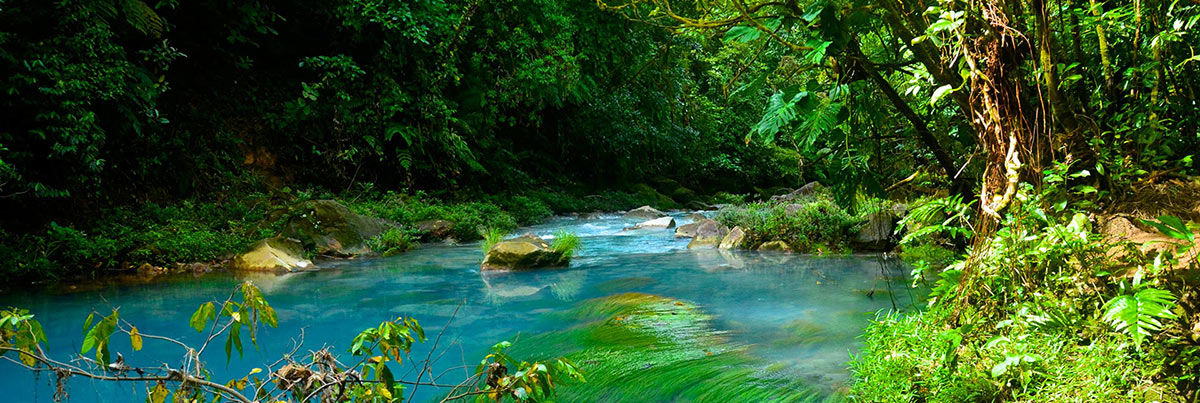Costa Rica is world-famous for its extraordinary wildlife, playing home to roughly 5% of the earth’s biodiversity. It is no surprise that this lush country is a hotspot for ecotourism.
Ecotourism is traveling responsibly with a focus on nature and wildlife, and partaking in educational experiences. Ecotourism provides beautiful natural experiences for visitors, sustains the well-being of local people, and increases knowledge and understanding through educational activities to help guests learn about the importance of protecting natural resources. You can learn more about ecotourism in another of our blog posts.

History of Wildlife Conservation and Ecotourism in Costa Rica
With its rich biodiversity and progressive environmental protection policies, Costa Rica is a world leader in ecotourism. Visitors travel to Costa Rica to enjoy volcanoes, beaches, jungles, hiking, and national parks.
More than 25% of Costa Rica’s total land area is protected by the National System of Conservation Areas. This network consists of 29 national parks, 19 wildlife refuges, 8 biological reserves, and a further series of protected areas that help to conserve the precious wildlife that lives there. The Osa Conservation Area on Costa Rica’s Osa Peninsula is one of the country’s most well-known biodiversity hotspots.
Costa Rica is well known for its successful and environmentally friendly ecotourism industry. With nearly ½ million acres of land designated as protected areas, ecotourism draws tourists to visit the extensive network of national parks and protected areas around the country.
Costa Rica was a pioneer in ecotourism. By the early 1990s, ecotourism had become a key component of the tourism industry in Costa Rica. Many of the first ecotourists to visit Costa Rica were academics and field biologists who came to study ecology. The many habitats of Costa Rica, such as rainforests, tropical forests, marine areas and wetlands, are the subject of scientific studies.
The publications generated by these biologists prompted a growing group of ecotourists who wanted to see Costa Rica’s wildlife for themselves. The enrichment of knowledge of these important habitats is an invaluable contribution from the National Parks System of Costa Rica.
Over time, ecotourism has come to be seen as a means to conserve natural areas throughout Costa Rica. Ecotourism provides an incentive for natural resource conservation and an alternative to environmentally damaging industries. Without the ecotourism market encouraging support for environmental protection, the vast network of protected areas in Costa Rica might be much smaller than it is today, and areas that are currently protected may otherwise have fallen to the demands of the logging or mining industries.
The rise of ecotourism in Costa Rica has resulted in an expansion of the job market, allowing local citizens to generate income and employment. Local communities and schools receive significant investments and donations from visitors, helping to improve the living conditions of local people.
Ecotourism in Costa Rica also encourages individuals to take action, and many visitors return home wanting to do more to help protect the environment. Ecotourism emphasizes changing hearts and minds through environmental education. Expert tour guides and educational activities invite visitors to become environmentalists, thereby promoting conservation efforts worldwide.
Costa Rica’s successful environmental and ecotourism policies have regularly been cited as a model for other countries.
The Certification for Sustainable Tourism
The Certification for Sustainable Tourism (CST) was developed by the Sustainability Programs Department of the Costa Rica Tourism Board in 1997, in collaboration with the Costa Rica National Accreditation Commission. The certification is recognized by the Global Sustainable Tourism Council.
The Certification for Sustainable Tourism provides guidelines for companies in the tourism sector to build their business model based on the best sustainable tourism practices. The purpose is to improve the way natural, cultural, and social resources are used, and to promote the active participation of local communities in the ecotourism industry in Costa Rica.
The Certification uses a rating system, on a scale of one to five, to assess businesses on the level of responsible tourism they uphold. The program evaluates tourism companies on four main aspects – physical biological parameters, infrastructure and services, external clients, and the socio-economic environment.
The Certification for Sustainable Tourism Program ensures that activities and services offered by businesses have a minimal negative impact on the surrounding natural environment. The program teaches best management practices, conducts certification assessments, and offers training sessions for businesses.
The Certification for Sustainable Tourism is a seal of approval for demonstrating environmentally and socially sound business practices.

Sights to See and Activities to do in Costa Rica
With majestic volcanoes, Pacific and Caribbean beaches, tropical dry, wet, and rain forests, and dense jungle landscapes, there is always something to do in Costa Rica.
A sunrise birding tour is a guaranteed way to fall in love with birds, whether you’re an avid birder or a novice. In Costa Rica, you can encounter hundreds of bird species, including Scarlet Macaws and toucans.
Coined “the most biologically intense place on Earth” by National Geographic, the Osa Peninsula on the Pacific Coast of Costa Rica is world-famous for its incredible rainforest. The Osa Peninsula offers a fascinating mix of freshwater and marine ecosystems, right next to lush rainforests, which is why such a vast variety of species can call it home.
If you head down to turtle nesting beaches just before sunset, you might be lucky enough to see adult females laying their eggs, or newly hatched turtles making their first trip towards the ocean. Sea turtles are highly protected, so you can only visit the nesting sites with a professional guide. In 25 to 30 years, these turtles will come back to the same beach to lay their own eggs.
There are so many national parks to choose from in Costa Rica’s extensive National Parks system, but Corcovado National Park is considered by some to be the “crown jewel”. Spanning 47,000 hectares, the national park is home to jaguars, peccaries, and tapirs. If that’s not enough, more than 450 species of birds are known to live in the national park, as well as nearly 700 species of plants.
Costa Rica has so many places and experiences to offer. Between the boat rides, walking tours, kayaking, and sea turtle viewing, it’s impossible to be bored in Costa Rica.

Resources:


